-
Car Reviews
- All reviews
- Midsize SUVs
- Small cars
- Utes
- Small SUVs
- Large SUVs
- Large cars
- Sports SUVs
- Sports cars
- Vans
Latest reviews
- Car News
-
Car Comparisons
Latest comparisons
- Chasing Deals
It’s pitched as a go-anywhere, do-anything SUV – so is Subaru’s first ever electric vehicle the EV we’ve all been waiting for?
The long-awaited first-ever fully-electric model from Subaru has finally landed in Australia, pitching itself as less of an electric vehicle, and more of a ‘Subaru’.
Promotional materials for the Solterra midsize SUV see it tackling the great Australian landscape, on the gravel and off the beaten track – a car that can do the zero-emissions thing, but also deliver the lifestyle that Aussies and Subaru loyalists aspire to.
Is this the EV we’ve all been waiting for, then?

We’ve just gone on our first local drive in the all new Solterra, a chance to experience it on and off-road, and get a taste of what is a crucial first step into electrification for the brand which now enters an increasingly competitive electric SUV market dominated by Australia’s most popular EV, the Tesla Model Y.
The Hyundai Ioniq 5, Kia EV6, and Ford Mustang Mach-E also contend the field, not to mention the soon-to-launch Volkswagen ID4 and ID5, or the Solterra’s identical twin, the Toyota BZ4X, with which the Subaru shares its platform.
Jointly developed by the two brands, you can think of the relationship between the Solterra and BZ4X in a similar vein to the Toyota GR86 and Subaru BRZ sports coupes, except the midsize electric SUV equivalent.
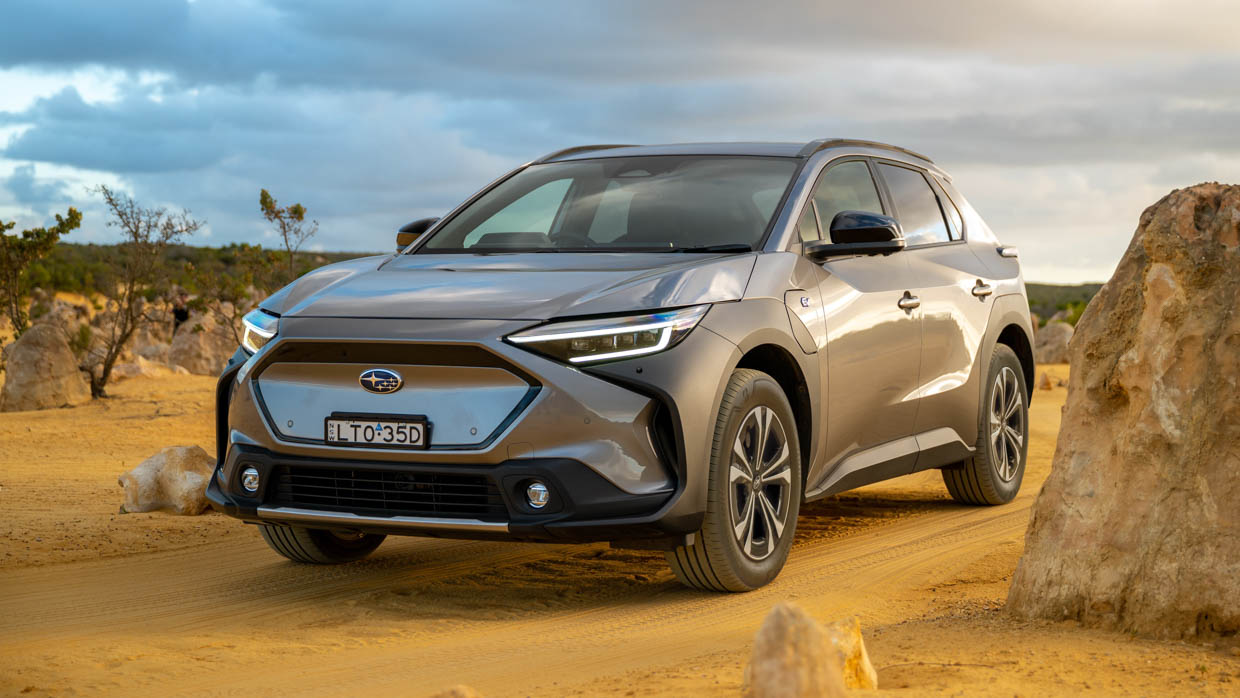
Naturally, there will be more similarities than differences in this relationship, but the nomenclature already seems to set the tone for what each brand is going for – Toyota choosing the more techy, slightly clinical ‘BZ4X’ nomenclature, while Subaru has opted for a name derived from two latin words for sun and earth…
There are plenty of both of those on our 30-degree Queensland launch drive, so let’s find out whether the Solterra lives up to the hype on and off-road, and just how good a job it does at being a Subaru.
Unlike its BZ4X twin, which offers a front-wheel-drive base model in Australia, the Solterra is only available with all-wheel drive locally, ensuring that it leans into Subaru’s key brand DNA.
It’s available as part of a two-grade lineup consisting of the entry-level AWD and a range-topping AWD Touring.
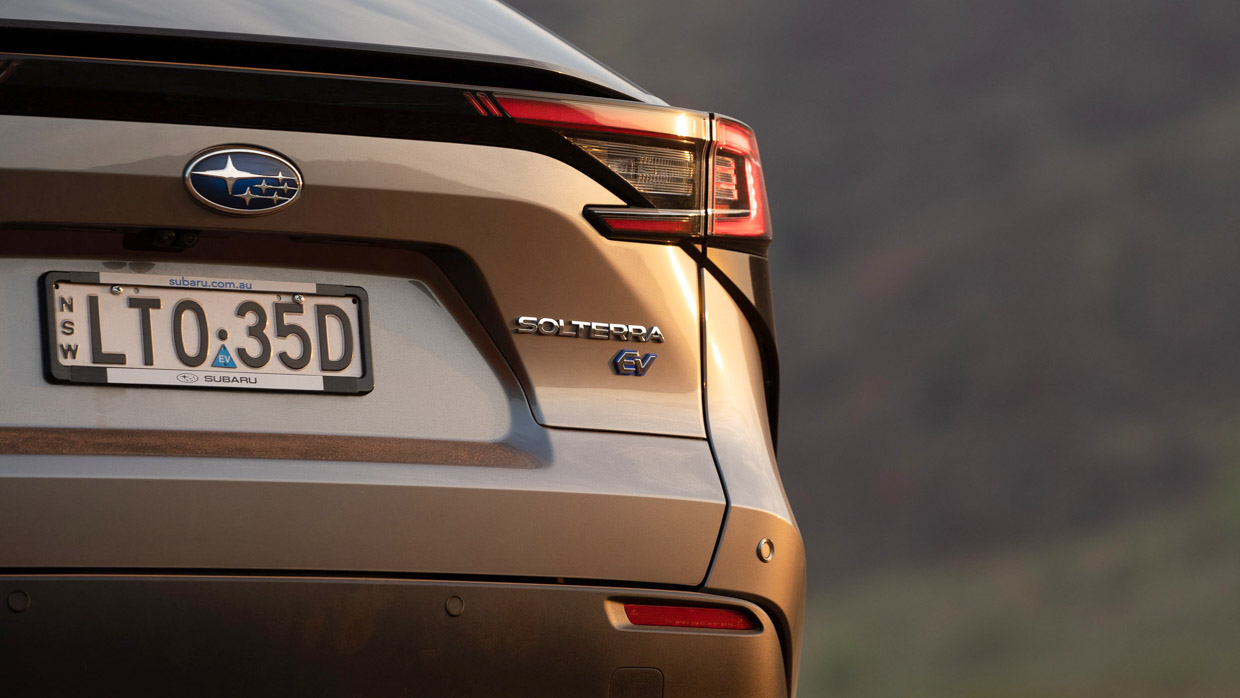
The entry grade AWD will set you back $69,990 before on-road costs, while the Touring will set you back $76,990 list.
Importantly, those are revised prices, recently announced by Subaru – shaving their previously confirmed prices by $8,000 just days before Toyota announced pricing for the BZ4X, signalling a bit of a price war and demonstrating the fierce competition that’s about to intensify in the segment.
Toyota has since announced pricing for its BZ4X, which has come in cheaper for its front-wheel-drive entry grade ($66,000), while the top-spec all-wheel-drive variant ($74,900) undercut Solterra Touring by $2090.
In terms of size, the Solterra measures in at 4690mm long, 1860mm wide and 1650mm wide, and has a wheelbase of 2850mm.
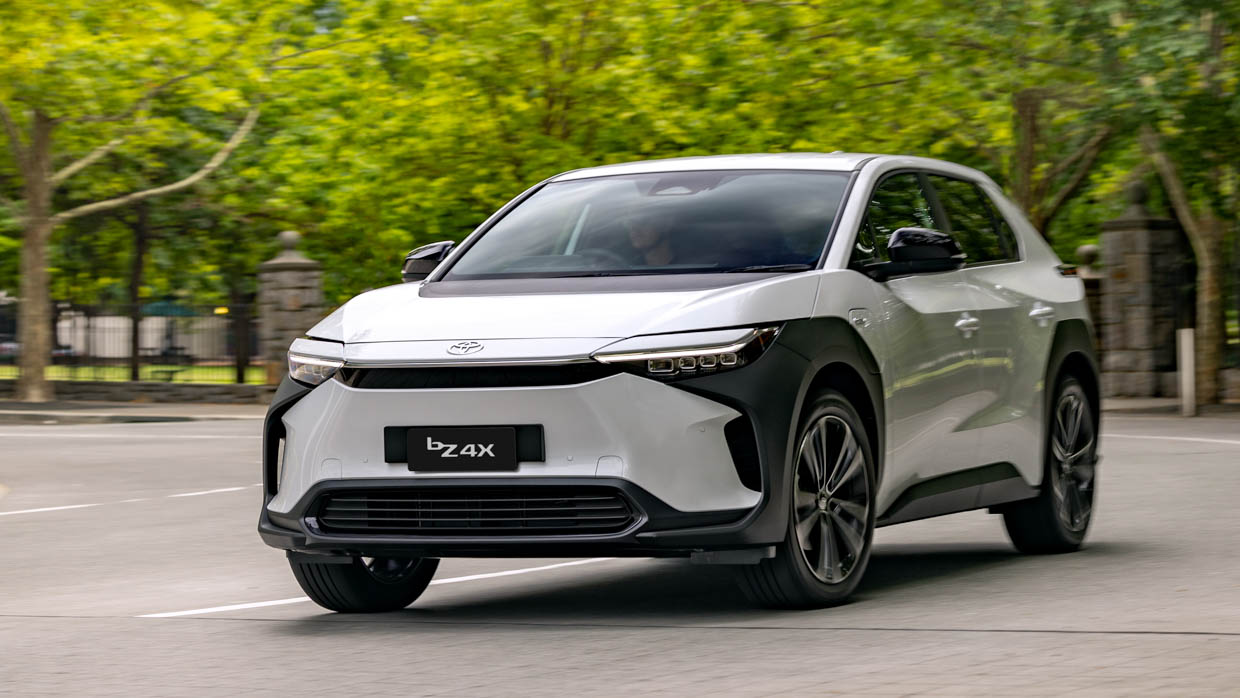
Spot the difference? Pictured: the Toyota BZ4x
That means it’s similar in size to a Toyota RAV4 or Subaru Forester, if a bit longer than both, while also having a longer wheelbase thanks to its electric packaging.
Importantly, given how it’s pitched, it has an impressive 212mm ground clearance, which we are looking forward to putting to the test.
For comparison, a base Tesla Model Y has a 167mm of ground clearance, the RAV4 Edge offers 200mm, while the Forester offers a superior 220mm to the Solterra.
Visually, you get a car that, while essentially an almost-identical twin to the BZ4X, does have some clear Subaru accents. Areas such as the front fascia design that clearly evokes the grille shape of petrol-powered Subarus.
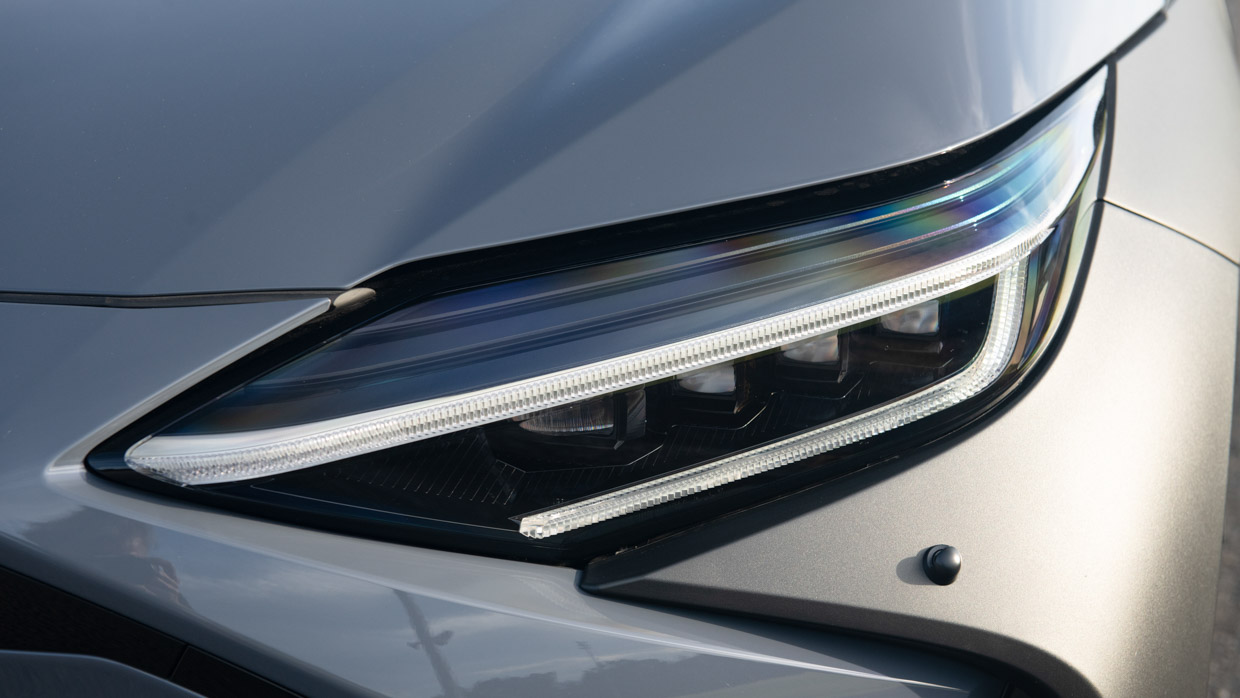
Overall, it’s not a bad looker, and the big plastic wheel-arches – which also appear on the BZ4X – do point to some off-road potential.
‘Under the bonnet’, so to speak, you have a 71.4kWh (gross) battery – or 64kWh usable – powering two electric motors, one on each axle delivering equal power outputs for a total 160kW and 337Nm.
That’s the same power output for either variant, with the Touring set apart by additional features only.
The vehicle is rated at 416km WLTP in high-spec form, which equates to a consumption figure of 15.4kWh per 100km if that range is achievable.
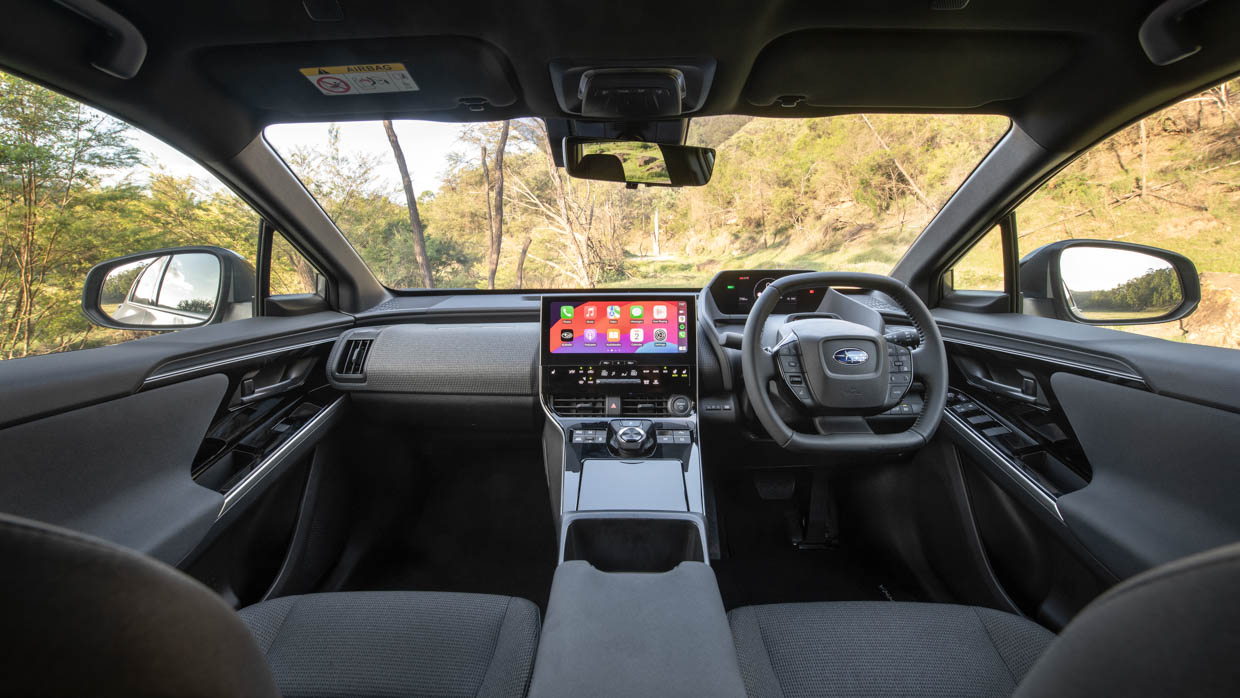
Granted, we have not yet performed any range testing, however it’s here where a longer range-variant would no doubt be welcomed in order to more fittingly align with the ‘go-anywhere’ pitch of the car.
In terms of features, both grades are well equipped, with standard features including the likes of S Pedal Drive (regenerative braking) and X-Mode (off-road modes).
Inside, standard on the entry-level AWD you’ll find an eight-way power seat with lumbar support (driver), heated front and rear outboard seats, a heated steering wheel, 12.3-inch infotainment touchscreen, 7.0-inch digital instrument display, wireless Apple CarPlay and Android Auto, a six-speaker stereo, LED headlights with front fog lights, and a powered tailgate.
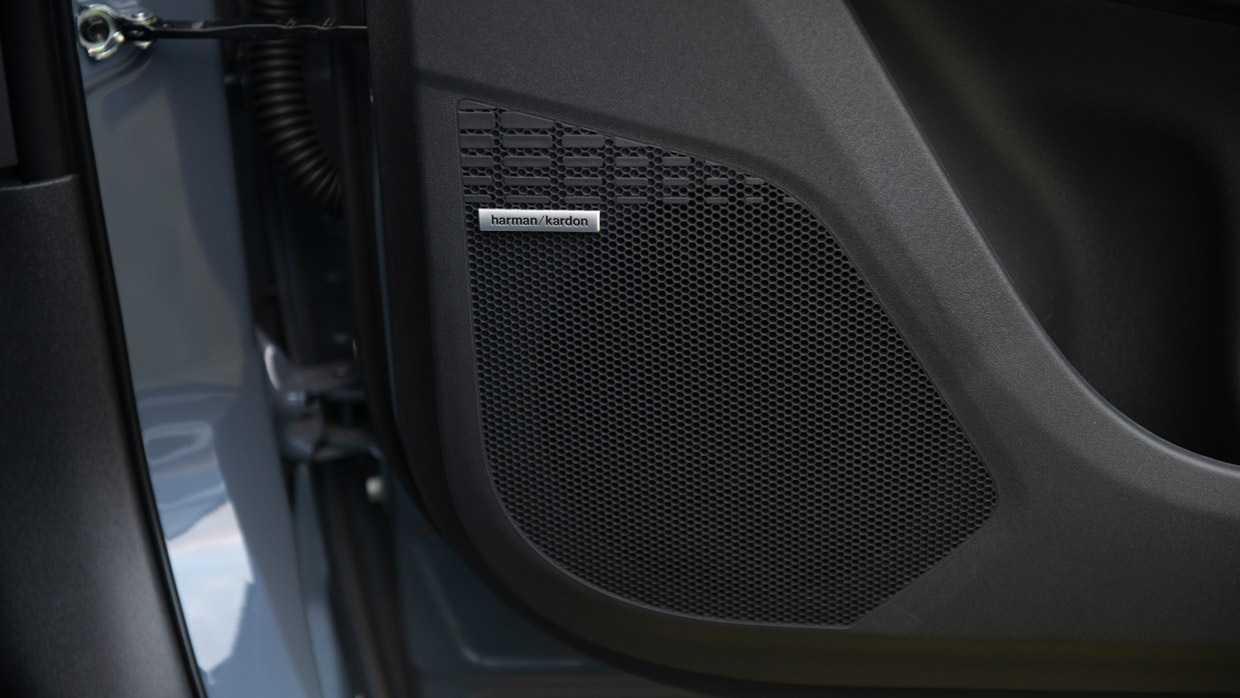
Stepping up to the AWD Touring will gain you additional features over the base model AWD including a panoramic glass roof, synthetic leather seats, eight-way power-adjustable front passenger seat, memory settings for the front driver seat, and a 10-speaker Harman Kardon sound system.
You’ll also score 20-inch alloy wheels for the top-spec model, versus the 18-inch wheels on the entry-grade AWD, as well as the option for two-tone paint options at additional charge.
In terms of charging, the Solterra comes with a 2kW AC charging cable with 10-amp wall plug included as standard.
Two charging bundles are also offered with purchase at additional cost. These include a single-phase 7kW Ocular LTE Plus Wallbox complete with a six-metre cable for $2250. Alternatively, a three-phase 22kW Ocular LTE Plus Wallbox with a similar style cable included for faster charging is available for $2645.
The Solterra impressed on my initial drive as an easy and predictable vehicle to pilot, one which should get the tick of approval from many Subaru loyalists.
It feels like a car that has been primarily tuned for comfort and that’s no bad thing because I found it a very comfortable place to be on our launch drive across a mixture of Gold Coast roads around town, on the highway, in the country, and of course, off-road. But more on off-roading below.
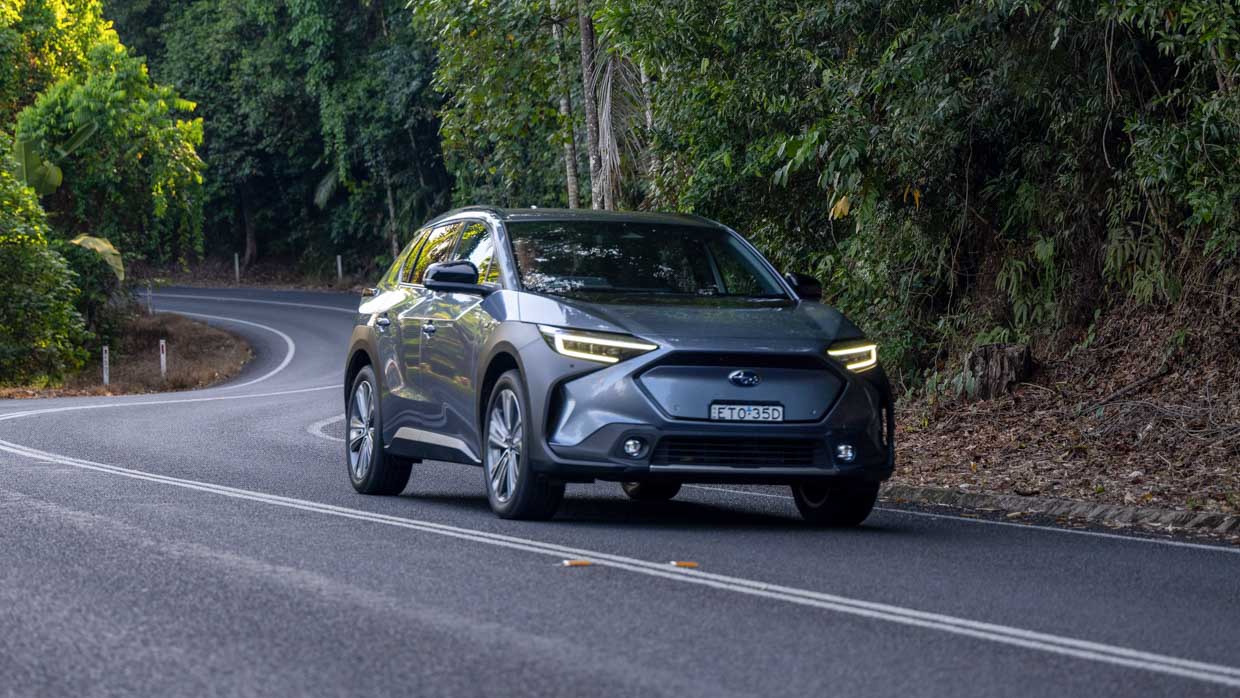
My first observation was a compliant ride quality that soaked up all the bumps I experienced on my drive very nicely. Granted, the vast majority of my driving was done in the base-spec Solterra, which rode on 18-inch wheels.
A short drive in the AWD Touring revealed a pleasingly pleasant ride quality, though a longer drive in both will be required to determine how much of a difference the wheels make.
The base variant also steered and handled predictably. The steering was very light and faithfully responsive to inputs, and the Solterra’s handling of some windy country roads also impressed.
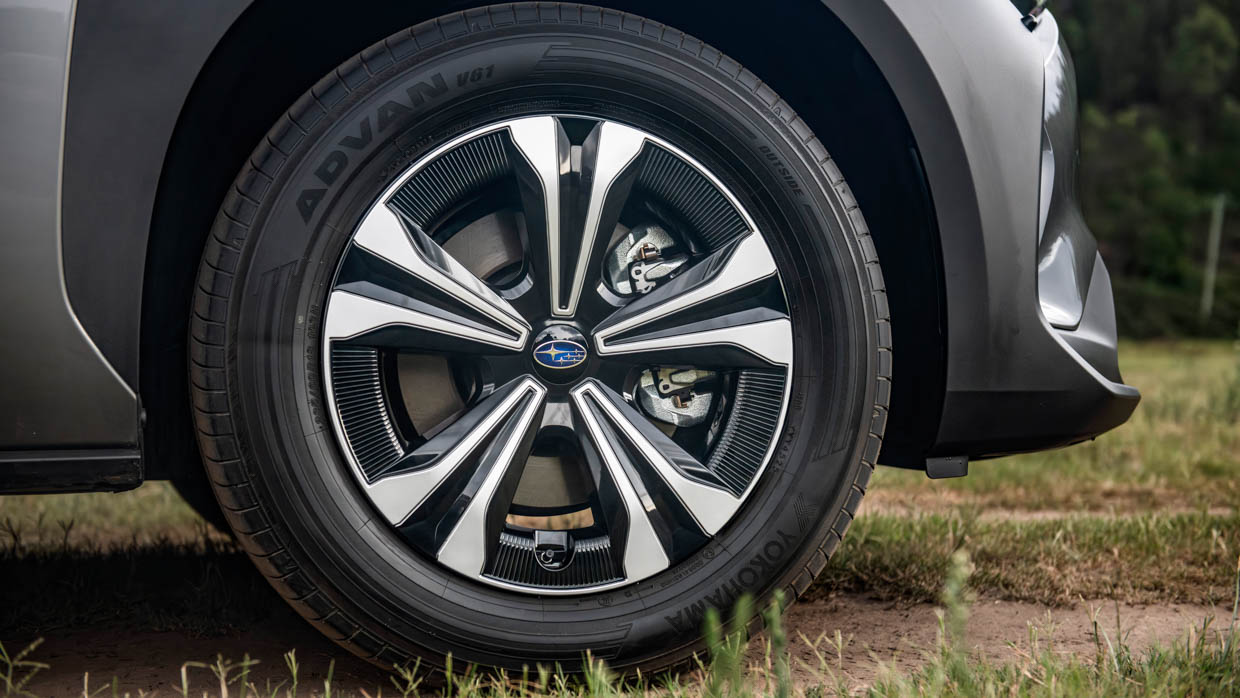
You didn’t seem to feel too much of the heft of the two-tonne kerb weight either.
Acceleration was decent and it has plenty enough poke to it for most people’s needs, delivering quite a linear and intuitive drive experience that’s easy to get accustomed to.
For Subaru owners stepping out of the Forester or the Outback into their first electric car, the drive experience won’t take long to adjust to, because as a family-focused SUV, the Solterra delivers the goods quite well – comfortable, pretty practical, quiet and easy-to-drive.
There are three drive modes you can choose from – power, normal and eco, with power mode designed to hasten the response of the acceleration.
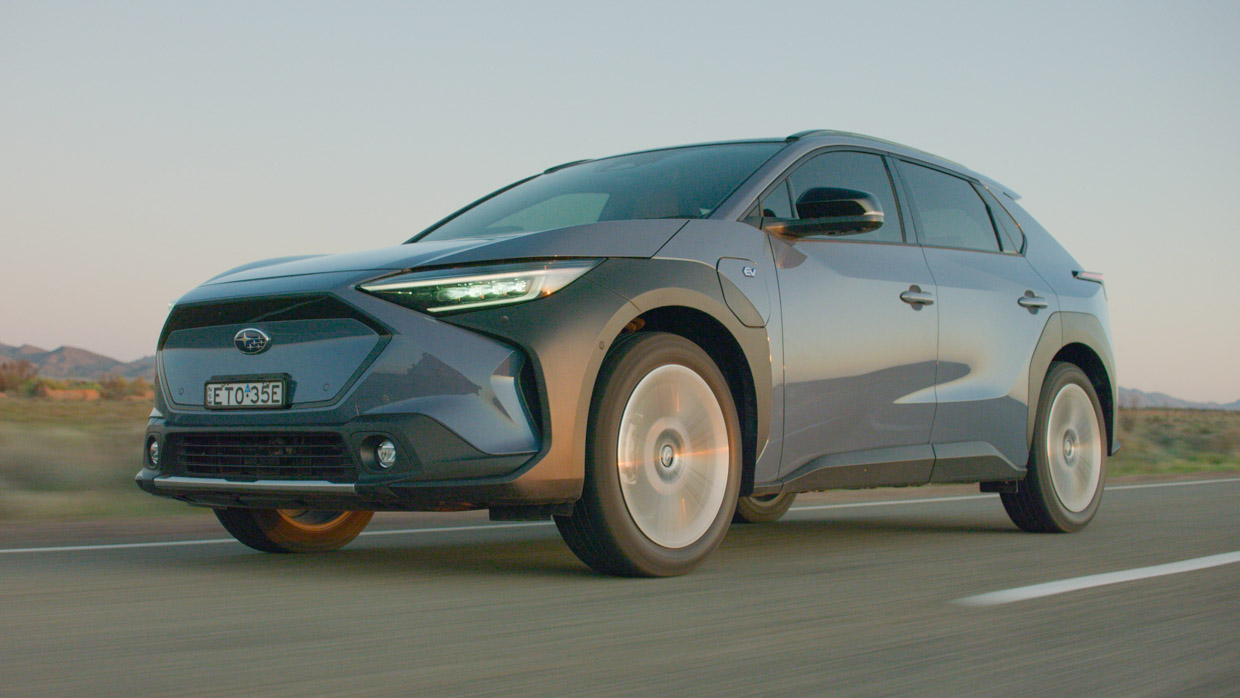
However, if you are after breakneck performance from your EV, then that’s not really the pitch that the Solterra delivers.
The 0-100km/h acceleration for the Solterra is quoted as 6.9 seconds and we look forward to doing a full-performance test when we get one into the Chasing Cars garage in the future.
Pitched as a more rugged family SUV, the single-powertrain Solterra range doesn’t offer a direct rival to more performance-oriented options in some broader competitor lineups.
Those cross-shopping a Mustang Mach-E GT, Kia EV6 GT, or Tesla Model Y Performance will likely overlook what the Solterra offers. While there have been previous rumours of an STI or STE performance version, there doesn’t appear to be anything of the like as yet in the foreseeable pipeline.
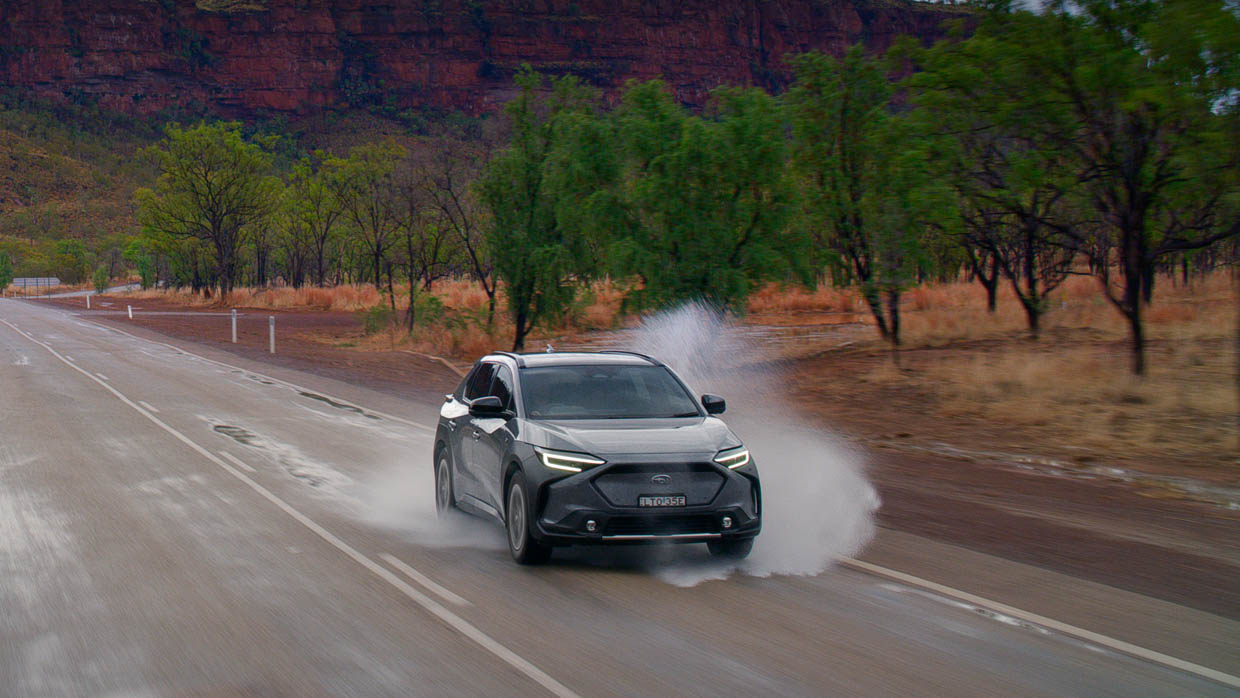
This is not to say that this is a slow EV by any means – for many buyers, the performance on tap will be more than enough.
Aside from acceleration, braking feel and performance feels natural in the Solterra, which also offers multiple levels of regenerative braking that you can select using the paddles on your steering wheel, or can be switched off completely.
You can also place the vehicle in optimum regen mode – or S Pedal Drive, as Subaru calls it – through a button on the centre console that maximises regenerative braking and enables one-pedal driving.
The Solterra felt very easy, natural and smooth to pilot in this mode, which I ended up using for a big chunk of the journey. We’ll also share some initial range and efficiency results a bit later on.
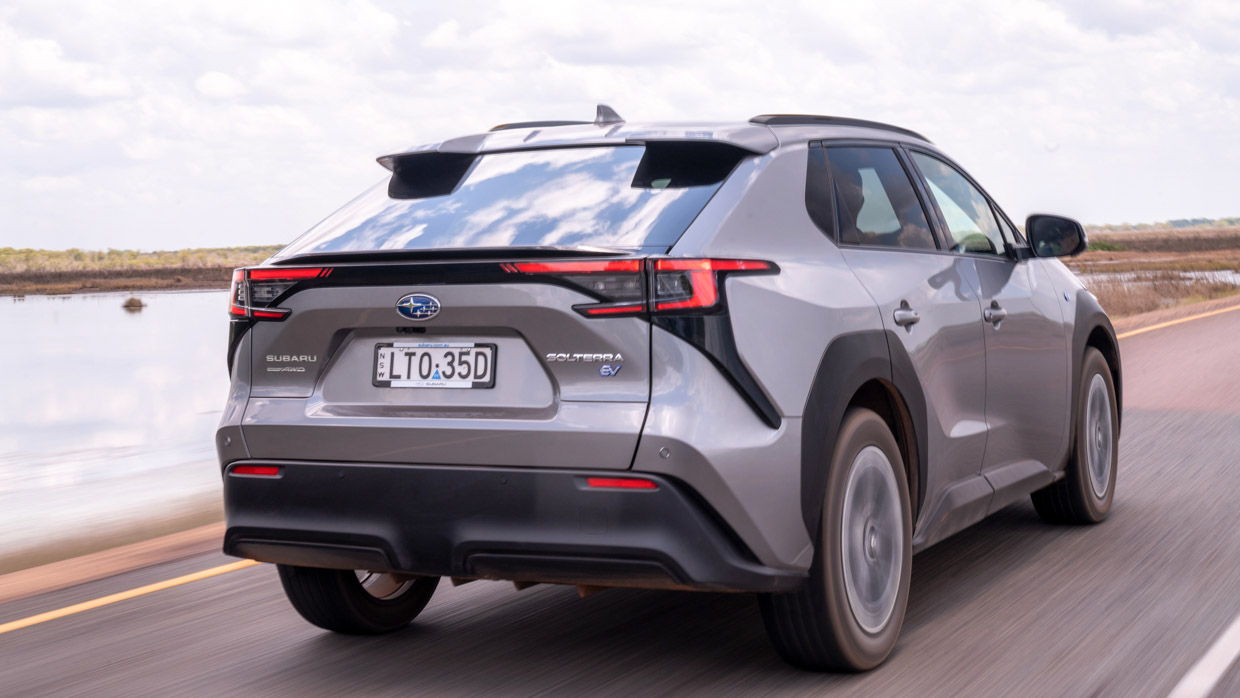
So how did the Solterra go off road? Overall, quite well.
Part of our launch drive included a short off-road course in which I was able to take the Solterra down a steep descending and ascending track that included lots of dirt and gravel, a few shallow water crossings and rocky trails, too.
This gave an opportunity to use some of its off-road credentials including Subaru’s X-Mode, which you can select in one of two modes – snow and dirt, or deep snow and mud – by pressing a button located in easy reach on the centre console.
The X-Mode system essentially works with the vehicle’s all-wheel-drive system to increase traction, with the system applying brakes on spinning wheels to produce a limited-slip differential effect.

As well as this, the vehicle also has Grip Control, which you can only use when X-Mode is active. This works essentially like cruise control at low speeds and is designed to maintain a constant speed of around 2-10km/h in incremental steps of 2km/h to prevent slippage on rough roads.
You can use a plus/minus switch on the centre console to toggle between 2km/h increments and set the speed you desire.
Overall, the Solterra handled the off-road track and descent with relative ease, making good use of its ground clearance and X-Mode functionality to ensure we avoided any hairy situations.
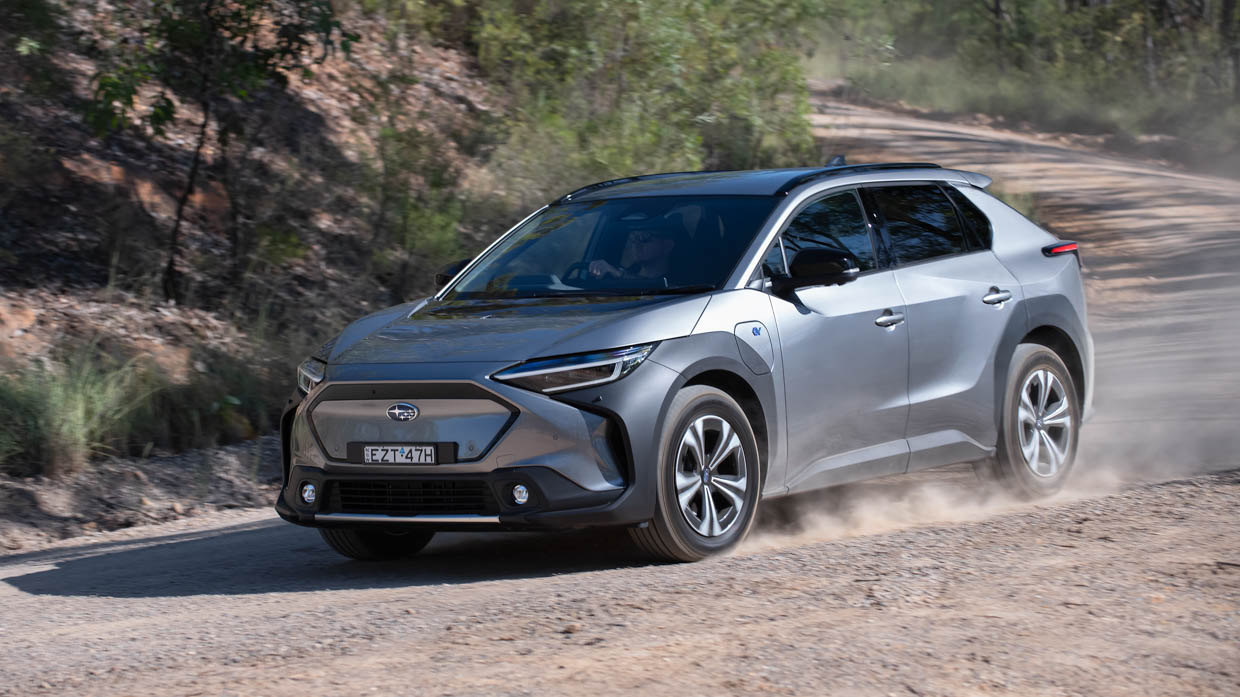
Ultimately the experience did leave me hungry for more, to see how much further we could push it off-road beyond the relatively short off-road drive.
However, the lack of a spare wheel seriously hampers any off-roading potential the rest of the package might otherwise promise.
This major shortcoming aside, I was left with an initial impression of a vehicle that can at least handle going off the beaten track quite well – here’s to more EVs like that.
The interior of the new Subaru Solterra is perhaps where a good many Subaru loyalists will notice the biggest differences.
Its cabin is a departure from the familiar and reasonably uniform interiors we see on other Subaru models across the model lineup, but that’s no bad thing – although it may take a bit of getting used to for those expecting a traditionally ‘Subaru’ experience.
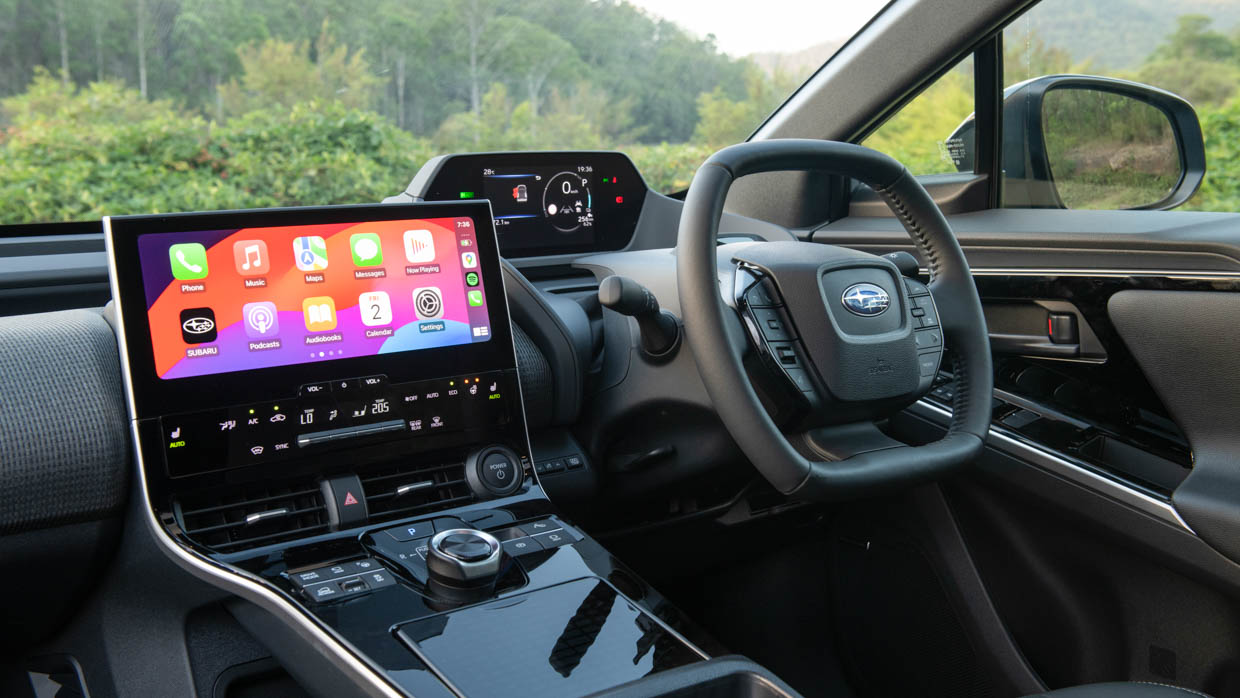
The most notable difference is experience from the driver’s seat where you are met with a Peugeot-like arrangement for the steering wheel and digital instruments.
Atop of the dash you have a 7.0-inch digital instrument cluster mounted high up, with the steering wheel sitting below it so that you don’t look through the wheel, but instead over it.
The wheel is also squarish in shape to minimise any impact on instrument visibility and the key advantage of the set up, theoretically, is that the instruments are more easily in your field of vision, a bit like a head-up display.
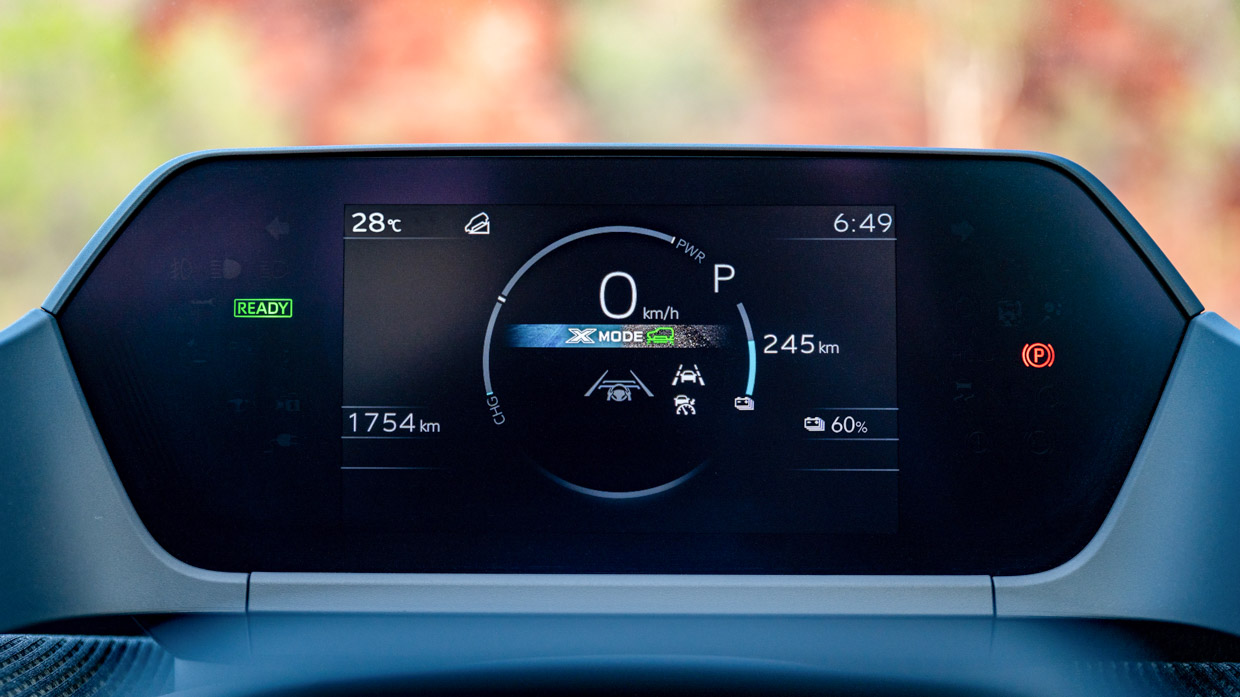
This design could potentially be a change that requires a bit of getting used to for some drivers but it didn’t take me long to get comfortable at all.
This said, it might be good to test out depending on your height and preferred driving position, just given the steering wheel might likely sit lower than you usually like it.
In terms of the actual digital instrument display, these did the job relatively well although one minor criticism was that the graphics didn’t seem to be the crispest in the business.
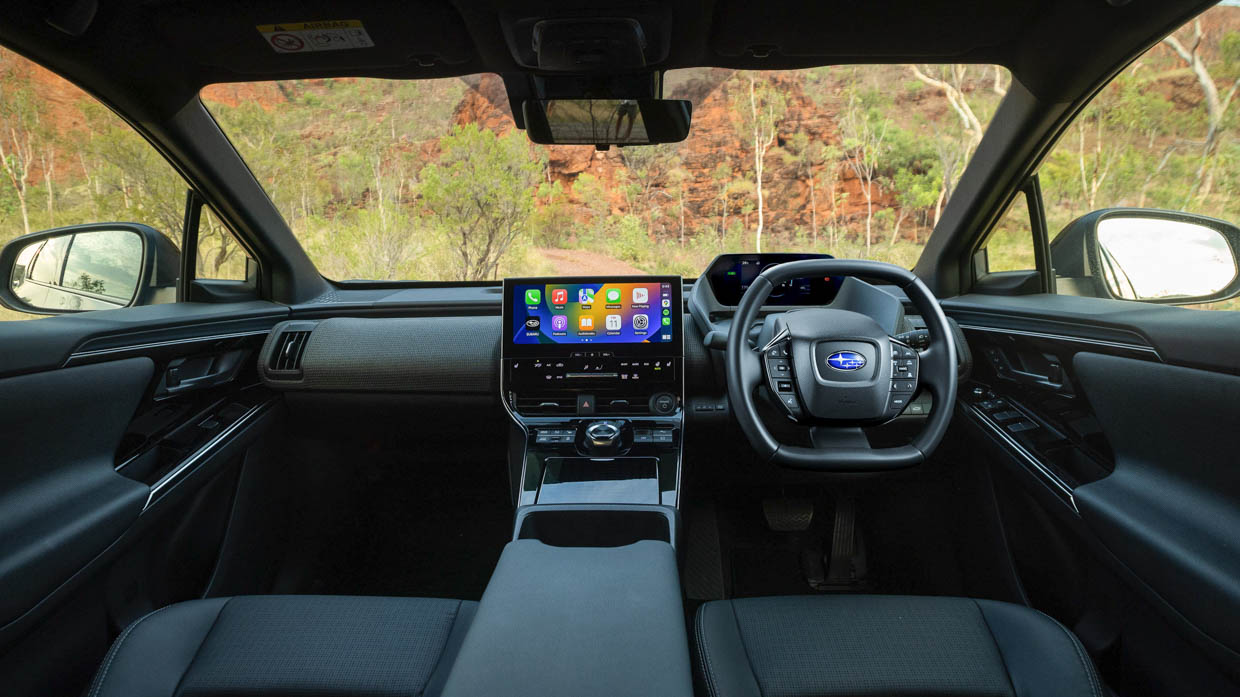
Aside from this, I found the seats extremely plush and comfortable, which was fantastic for our long launch drive.
The driver’s seat has eight-way power adjustment with lumbar support, so it’s easy to find your preferred driving position. The AWD Touring version also grants you two memory settings for the driver, as well as eight-way power adjustment for the front passenger.
Both front seats and rear outboard seats are heated, too, on both variant grades.
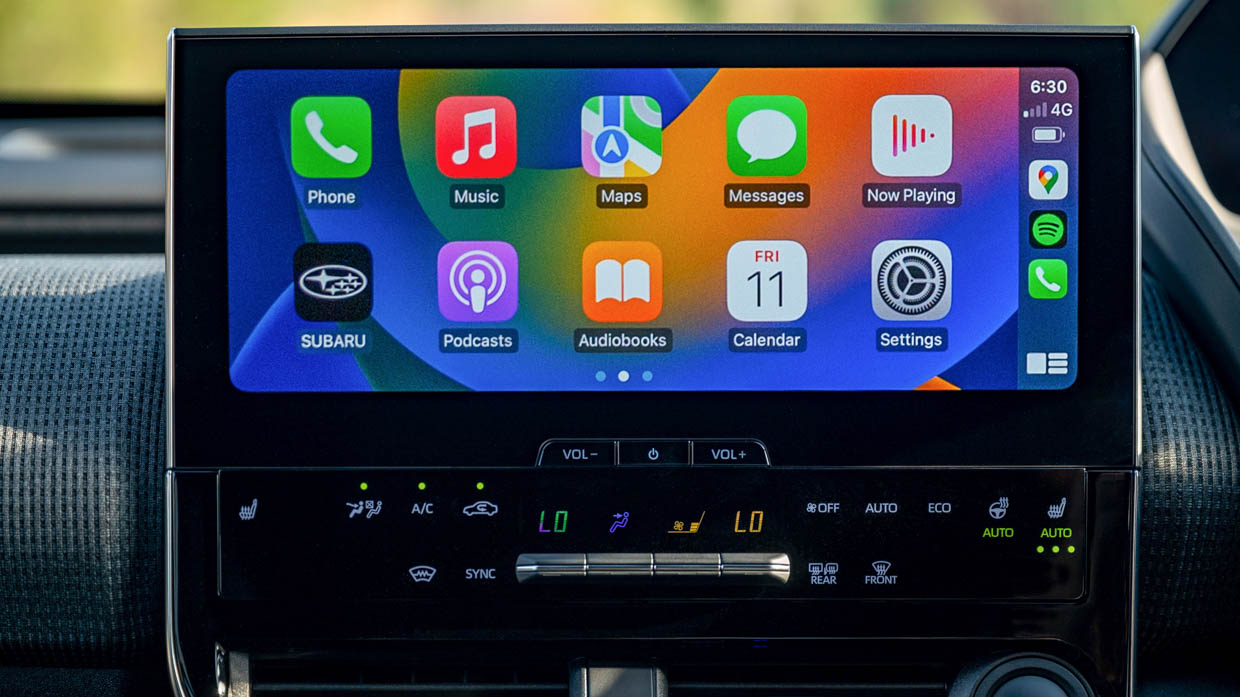
The next big change for a Subaru interior is the centre console given that it departs from Subaru’s contemporary ICE designs characterised by vertical screens. Instead, here in the EV we have a design that’s headlined by a 12.3-inch horizontal touchscreen display.
My first impressions are that it’s a good unit with clear graphics, intuitive controls and speedy responses.
What I also appreciate is that all functionalities haven’t been buried behind multiple touchscreen menus. Instead, the cabin features an array of physical buttons and shortcut controls below the screen to control climate settings, volume, drive modes, regenerative braking and X-Mode settings.
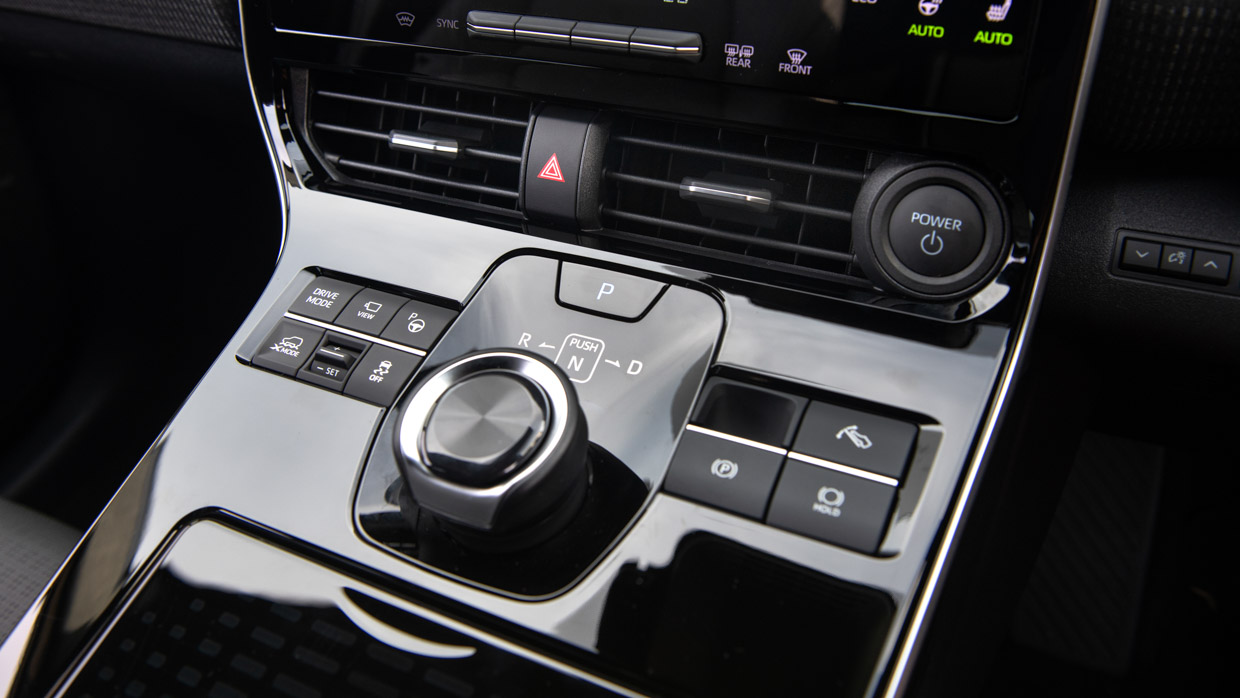
Another first for Subaru is a new gear selector, which is a rotary dial that you push down and twist to use. I found it quite easy to get used to.
Storage was quite good for the most part – lots of space in the centre console which also included a closed cubby for charging your phone that has a transparent lid on it.
But, unfortunately, there’s no glovebox, an interesting packaging decision that I thought only the likes of Mazda MX5s could get away with.
Build quality also seemed decent on initial impression and I was quite a fan of the materials used, particularly the cloth/carpet-like trim used all along the dash, which adds to the generally pleasant and cosy ambience of what is a nice cabin to spend time in.
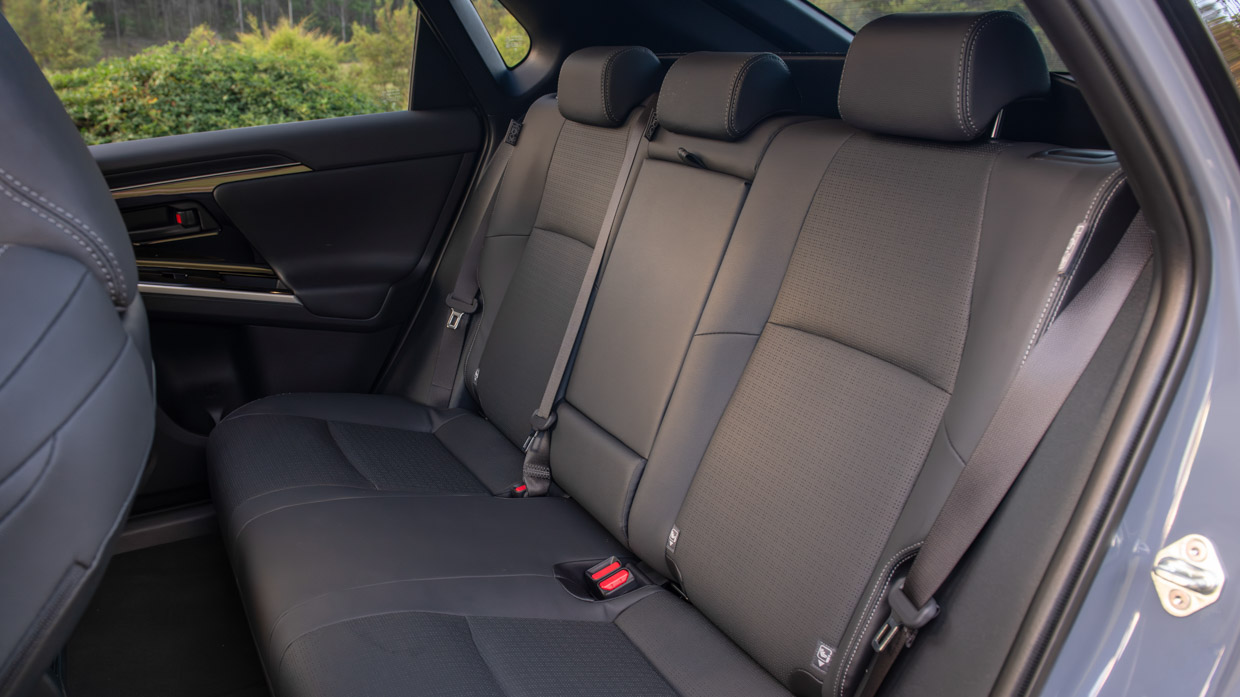
The rear seats were very spacious too, with very decent leg, knee and toe room for my 183cm frame. If I were to draw a criticism then the rear seats could do with more under thigh support for taller long-legged passengers.
Rear passengers score decent amenities with two USB-C outlets, rear air vents, two outboard heated rear seats as mentioned earlier, and a centre armrest with cup-holders plus a little slot for your phone or iPad.
Opening up the boot via the electric power tailgate – standard on both grades – reveals a boot with 410 litres of space. It’s not a class-leading boot by any means, but it’s acceptable. It also has additional amenities such as cargo hooks and a retractable cargo blind, and 60/40 split-folding rear seats.
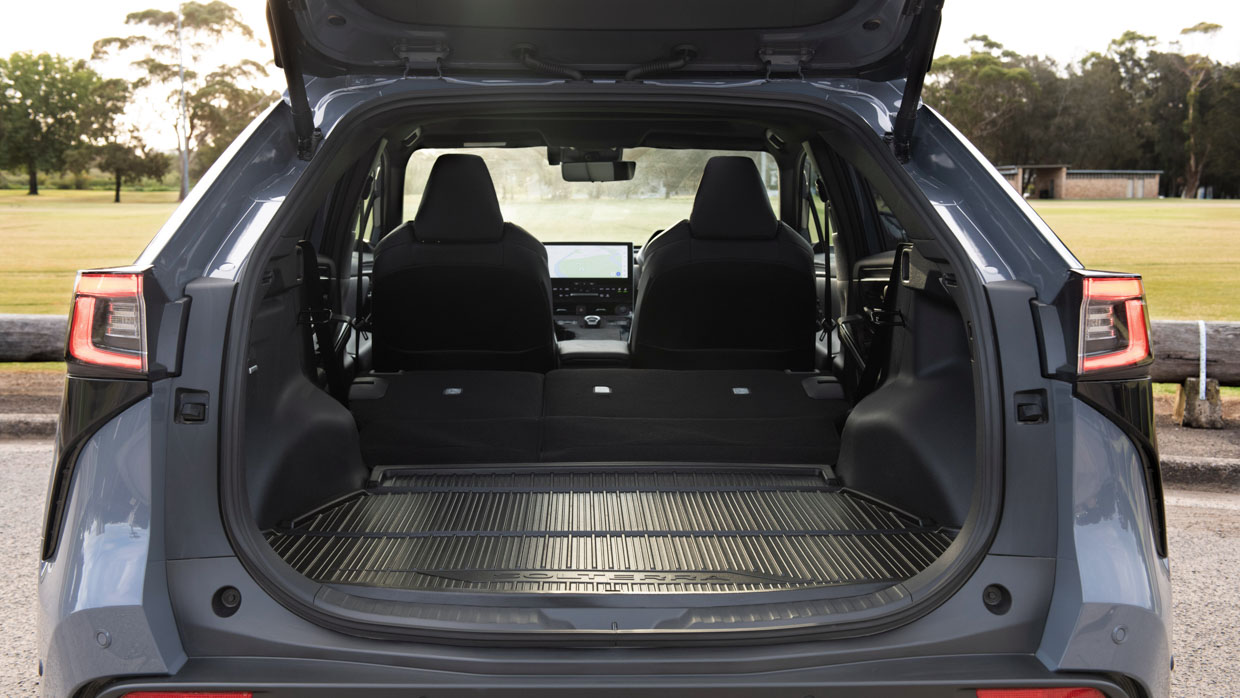
It’s important to note that the fastback-style design, which features a sloping rear window, as opposed to the more vertical design of a vehicle such as a Forester. This may impact your ability to load big bulky items into the rear given you are sacrificing some high-up space.
Unfortunately, there’s no frunk either.
The most disappointing omission in the boot, however, is the fact that it doesn’t have any spare wheel, just a puncture repair kit. For a vehicle which pitches itself as a go-anywhere, do-anything EV, that’s a shame – especially when the recently launched new front-drive Hyundai Kona Electric has managed to fit one in.
A maximum five-star ANCAP crash safety rating has recently been announced for the Solterra.
Not only that, but it also comes equipped with a suite of safety and driver assistance features including:
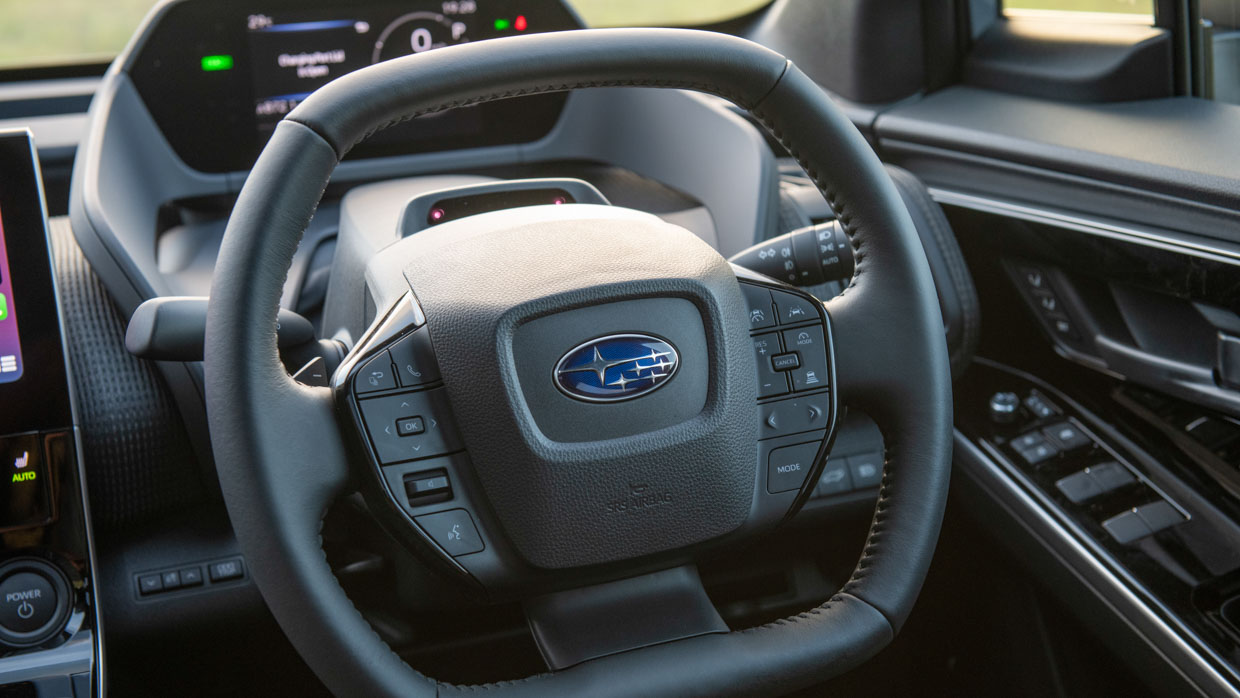
In terms of passive safety, the Solterra also comes with dual-front, dual-front-side, dual-curtain and front seat centre airbags.
I didn’t find the lane assistance aids to be too intrusive during my time with the car and only had one driver attention alert, so it did seem to be tuned a bit better than some of the more intrusive systems out there, at least on my initial drive.
The Subaru Solterra comes with a five-year, unlimited-kilometre warranty. As well as this, the battery is covered by an eight-year/160,000km warranty too.
Service internals are every 12 months or 15,000kms, whichever comes first. Significantly, Subaru is including a five-year/75,000km service plan with any Solterra purchase, included in the vehicle price, as well as five years of roadside assistance.

What about in terms of charging and efficiency?
Well, we haven’t conducted an in depth test of the above just yet but we can share some initial results from our launch drive where we drove the Solterra for 110km across a mix of highway, urban and country roads.
This included a mixture of different modes and efficiency settings as we became acquainted with the car, some instances of gravel roads, and some more spirited driving too.
Based on the vehicle’s 64kWh usable battery capacity, we consumed 18.6kWh/100km on our launch drive, with this figure extrapolating to a total projected range of 343km.
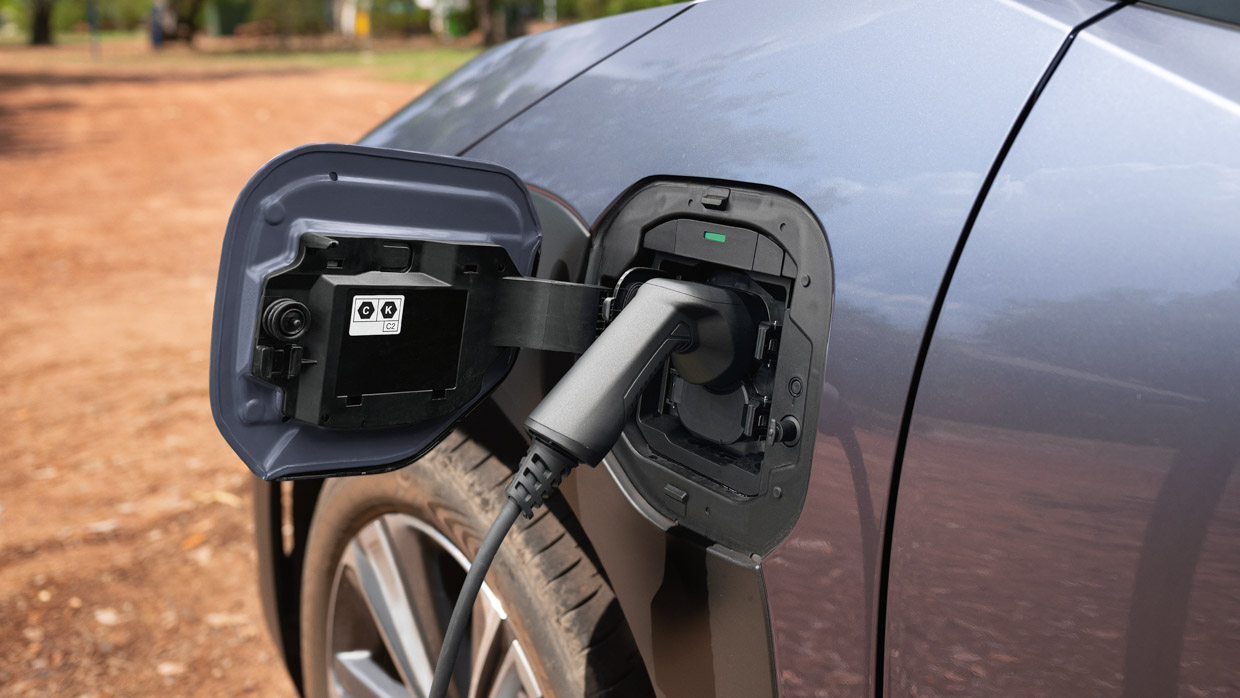
It’s important to note that these are initial results, so we’ll wait to see how the Solterra performs under our standard test conditions when we do our in-depth efficiency test. We look forward to getting it into the garage to do that soon.
In terms of charging, the Solterra has both AC and DC charging capability and Subaru says that the Solterra can get from 0-80 percent charge via a 150kW DC charger in approximately 30 minutes.
Using a single phase 7kW AC charger will reportedly go from 0-100 percent charge in approximately 9.5 hours, with an 11kW three-phase plug taking approximately 6.5 hours to get from 0-100 percent charge.
The Solterra finally offers Subaru loyalists an electric option to step into.
While in some ways it’s very different to any other of the brand’s models – the interior, especially – Subaru has done a good job of injecting some of the brand’s ‘Subaruness’ into it.
It does the family SUV thing quite well. It offers decent space, is relatively practical and is very comfortable, while also bringing pleasant and predictable driving experience that should ultimately satisfy most drivers.
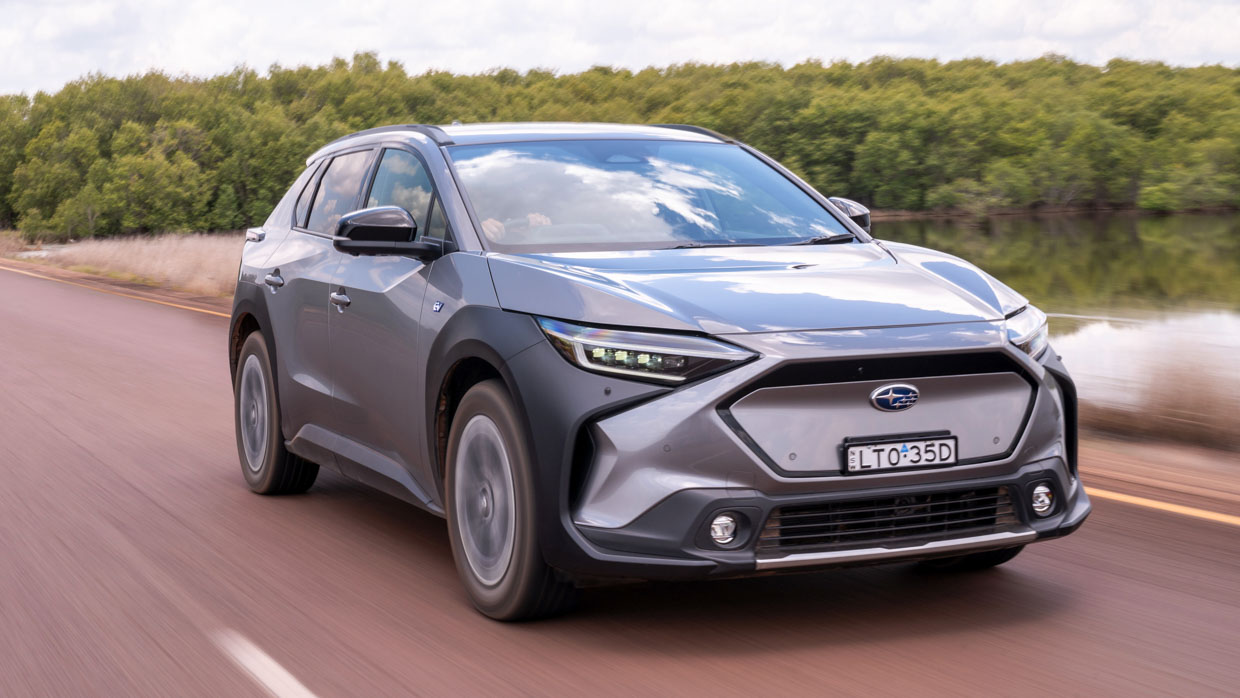
The main area it could be bolstered is in the exact area it pitches itself as a more rugged, off-road capable EV. While it demonstrates signs of offering genuine capability, it doesn’t have a spare wheel or acceptably long range that going off the properly beaten path demands.
If a long-range, spare-wheel-equipped version of the Solterra were to join the lineup down the track, that would certainly bolster Subaru’s execution on the brief – made even more fun and enticing if it were specified in Subaru’s ‘Wilderness’ trim!
But the brand needs to start somewhere with electrification, and as a first effort the Solterra offers something decent that Subaru fans ought to embrace. The fact pricing has come down is good too – although, perhaps it could have come down even further to make an even stronger statement in a competitive market.

Will its rugged-Subaru focused pitch be enough to entice EV buyers? Time will tell.
For now, a more in depth range, efficiency and charging test awaits. And hopefully, more off-roading – because any EV that can handle a bit of dirt is also something that should be encouraged if the migration to a fully electric future is to continue unabated.
Key specs (as tested)
About Chasing cars
Chasing Cars reviews are 100% independent.
Because we are powered by Budget Direct Insurance, we don’t receive advertising or sales revenue from car manufacturers.
We’re truly independent – giving you Australia’s best car reviews.
The estimate provided does not take into account your personal circumstances but is intended to give a general indication of the cost of insurance, in order to obtain a complete quote, please visit www.budgetdirect.com.au. Estimate includes 15%^ online discount.
^Conditions Apply
Budget Direct Insurance arranged by Auto & General Services Pty Ltd ACN 003 617 909(AGS) AFSL 241 411, for and on behalf of the insurer, Auto & General Insurance Company Limited(ABN 42 111 586 353, AFSL 285 571).Because we don’t know your financial needs, we can’t advise you if this insurance will suit you. You should consider your needs and the Product Disclosure Statement before making a decision to buy insurance. Terms and conditions apply.
Indicative quote based on assumptions including postcode , 40 year old male with no offences, licence suspensions or claims in the last 5 years, a NCD Rating 1 and no younger drivers listed. White car, driven up to 10,000kms a year, unfinanced, with no modifications, factory options and/or non-standard accessories, private use only and garaged at night.
^Online Discounts Terms & Conditions
1. Discounts apply to the premium paid for a new Budget Direct Gold Comprehensive Car Insurance, Third Party Property Only or Third Party Property, Fire & Theft Insurance policy initiated online on or after 29 March 2017. Discounts do not apply to optional Roadside Assistance.
2. Discounts do not apply to any renewal offer of insurance.
3. Discounts only apply to the insurance portion of the premium. Discounts are applied before government charges, taxes, levies and fees, including instalment processing fees (as applicable). The full extent of discounts may therefore be impacted.
4. We reserve the right to change the offer without notice.